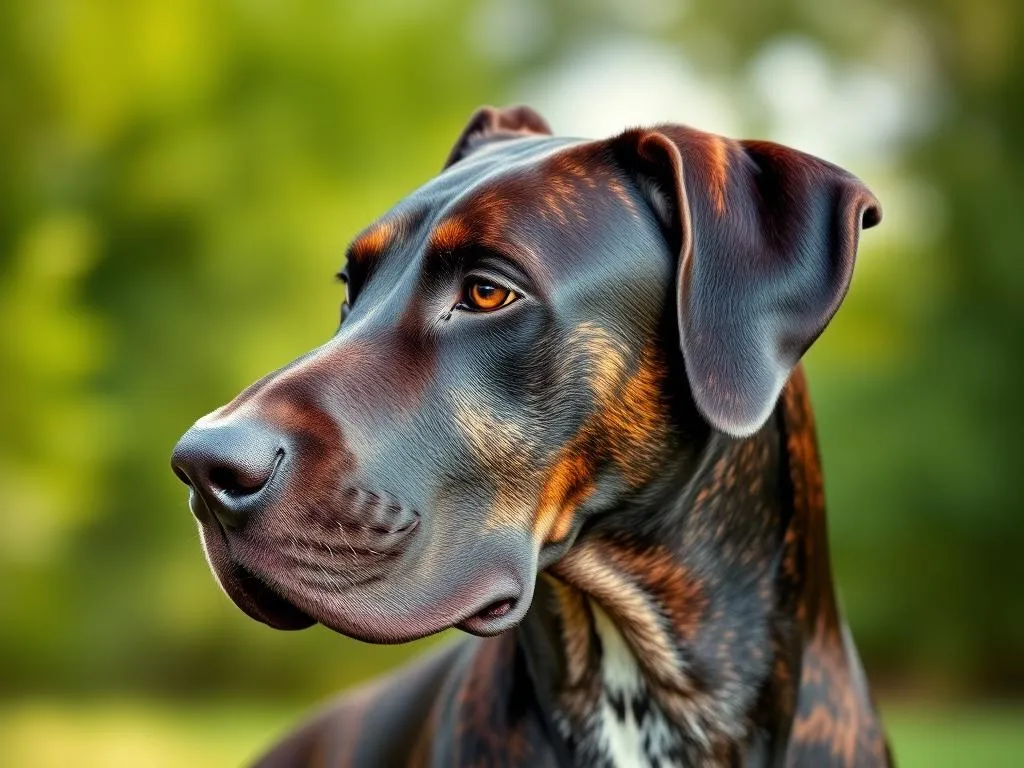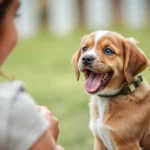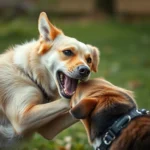
Introduction
Great Danes are often referred to as the “gentle giants” of the dog world. These magnificent dogs are known for their impressive size, strength, and affectionate nature. Despite their imposing stature, Great Danes are typically friendly and sociable, making them exceptional family pets. However, due to their size and energy levels, how to train a Great Dane effectively is crucial. Proper training not only enhances their behavior but also fosters a strong bond between you and your canine companion.
Effective training is particularly important for large breeds like Great Danes. A well-trained Great Dane is a joy to have around, while an untrained one can become a handful. By understanding their unique characteristics, preparing adequately, and employing appropriate training techniques, you can ensure your Great Dane grows into a well-mannered and confident adult.
Understanding the Great Dane
Breed Characteristics
Great Danes are one of the largest dog breeds, with males typically weighing between 140-175 pounds and females weighing between 110-145 pounds. Their majestic height often reaches over 30 inches at the shoulder, and they possess a strong, muscular build. Despite their size, Great Danes are known for their calm demeanor and affectionate nature. They thrive on human interaction and require regular exercise to maintain their health.
Common behavioral traits of Great Danes include playfulness, loyalty, and a protective instinct toward their family. However, their size can sometimes lead to challenges in training, especially if they exhibit stubbornness or independence.
Training Challenges
Training a Great Dane comes with its own set of challenges due to their sheer size and strength. Space requirements can make training sessions a bit more complicated, particularly in smaller homes. Additionally, Great Danes can be stubborn, which may lead to resistance during training sessions if not managed properly.
Importance of Socialization
Socialization is a crucial aspect of training any dog, especially for Great Danes. Early exposure to various environments, people, and other animals helps reduce anxiety and fear-based behaviors. A well-socialized Great Dane is generally more confident and adaptable, making outings and family gatherings more enjoyable.
Preparing for Training
Essential Training Tools
Before diving into training, it’s important to gather the right tools. A sturdy collar and leash are essential for managing your Great Dane during walks and training sessions. Consider using a harness specifically designed for large breeds to prevent strain on their neck.
Treats and rewards play a significant role in positive reinforcement training. Selecting high-value treats that your Great Dane loves will make training more effective. Additionally, using a training clicker or marker can help signal to your dog when they’ve performed a desired behavior, making the training process clearer.
Creating a Training Schedule
Establishing a training schedule is vital for consistent learning. Set realistic goals and timelines for each training session, aiming for short, engaging sessions that last around 5-10 minutes, especially for young puppies. Consistency is key; training your Great Dane at the same time every day helps reinforce learning.
Choosing the Right Training Method
Positive reinforcement is the most effective training method for Great Danes. This involves rewarding desired behaviors with treats, praise, or playtime. Unlike traditional methods that may rely on corrections, positive reinforcement builds trust and encourages a desire to please. Understanding the benefits of this approach will significantly enhance your training experience.
Basic Commands to Teach
Sit
Teaching your Great Dane to “sit” is one of the first commands you should tackle.
- Start with a treat: Hold a treat close to their nose to capture their attention.
- Move the treat upward: As their head follows the treat, their bottom will naturally lower to the ground.
- Say “Sit”: Once they are sitting, immediately say the command “sit” and reward them with the treat.
- Repeat: Practice this several times, gradually phasing out the treat while continuing to reward them with praise.
Common mistakes include using the command before they understand it or failing to reward them promptly. Be patient and consistent.
Stay
The “stay” command is essential for keeping your Great Dane in a safe position.
- Start in a sitting position: Have your dog sit, then show them a treat.
- Introduce the command: Say “stay” as you move your hand in front of their face, palm out.
- Take a step back: If they remain in place, reward them immediately.
- Increase distance and duration: Gradually increase the distance and duration of the stay command.
Be sure to practice in low-distraction environments before gradually introducing more distractions.
Come
The “come” command is vital for safety and recall training.
- Use a long leash: Begin in an enclosed area with a long leash attached to your Great Dane.
- Get their attention: Call their name followed by “come” in an enthusiastic tone.
- Reinforce with treats: When they come to you, reward them with treats and praise.
- Gradually increase distance: As they get better, increase the distance you call them from.
Make sure to practice this command regularly, as it could prevent dangerous situations.
Down
Teaching your Great Dane to lie down can help them settle during downtime.
- Start with a treat: Have your dog sit and then place a treat near their nose.
- Move the treat to the ground: Slowly lower the treat and encourage them to follow it down.
- Say “down”: As they lie down, say the command “down” and reward them.
- Reinforce the command: Practice this regularly, gradually reducing the use of treats.
If they resist, avoid forcing them down. Instead, encourage them with gentle guidance and patience.
Advanced Training Techniques
Leash Training
Leash training is crucial for managing your Great Dane during walks.
- Use a proper harness: A front-clip harness can help control pulling.
- Start walking: Encourage your Great Dane to walk beside you, rewarding them for staying close.
- Address distractions: If they pull, stop walking until they return to your side.
- Practice loose-leash walking: Gradually increase the distance and duration of your walks.
Consistency and patience are essential for successful leash training.
Crate Training
Crate training offers numerous benefits, including providing your Great Dane with a safe space.
- Choose the right crate: Ensure the crate is large enough for your Great Dane to stand, turn, and lie down comfortably.
- Introduce the crate: Place treats inside the crate to encourage exploration.
- Gradual acclimation: Start with short periods inside the crate and gradually increase the time.
- Positive reinforcement: Always reward your dog for entering the crate calmly.
Crate training can also assist with house training and provide a safe haven when needed.
Off-Leash Training
Training your Great Dane to be off-leash requires careful consideration.
- Start in a secure area: Use a fenced yard or a safe, enclosed space.
- Practice recall: Use the “come” command frequently to reinforce their return to you.
- Gradual exposure: Slowly increase their freedom, introducing distractions gradually.
- Safety first: Always monitor your Great Dane closely when off-leash, especially in public spaces.
Successful off-leash training allows for more freedom and enjoyable outings.
Addressing Behavioral Issues
Common Behavioral Problems
Great Danes may exhibit behavioral issues like jumping, barking, or aggression if not trained properly. Understanding the root causes of these behaviors is crucial for effective modification.
Solutions and Strategies
- Positive reinforcement: Use treats and praise to reward desired behaviors while redirecting negative ones.
- Redirection techniques: For jumping, teach them to sit instead. For barking, identify triggers and manage them.
- Consistent commands: Ensure everyone in your household uses the same commands and techniques for consistency.
Seeking Professional Help
If you encounter persistent issues, consider hiring a professional trainer. Look for trainers with experience in large breeds and positive reinforcement methods. They can offer tailored advice and strategies to address specific concerns.
Socialization Techniques
Importance of Early Socialization
Early socialization is essential for Great Danes to develop into well-adjusted adults. Puppies and adult dogs alike benefit from exposure to various people, animals, and environments.
Techniques for Socialization
- Group classes: Enroll your Great Dane in puppy socialization classes or adult training classes.
- Playdates: Arrange playdates with well-mannered dogs to help them learn appropriate behaviors.
- New experiences: Regularly introduce them to different environments, such as parks, stores, or community events.
Monitoring Progress
Keep an eye on your Great Dane’s behavior during socialization. Signs of successful socialization include relaxed body language and willingness to interact. Address any setbacks by revisiting gradual exposure techniques.
Maintaining Training and Reinforcement
Continuing Education
Training should be an ongoing process. Regular practice helps reinforce commands and keeps your Great Dane mentally stimulated. Consider enrolling in advanced classes or engaging in activities like agility or obedience training.
Reinforcement Techniques
- Keep it fresh: Regularly change up training exercises to maintain interest.
- Incorporate training into daily routines: Use meal times, walks, and playtime as opportunities for reinforcing commands.
- Engaging activities: Incorporate games that require problem-solving or obedience to keep your Great Dane mentally sharp.
Building a Lasting Bond
Training plays a significant role in strengthening the relationship between you and your Great Dane. The time spent together during training creates trust and understanding, enhancing your overall companionship.
Conclusion
Training a Great Dane requires commitment, patience, and consistency. By understanding their unique characteristics and employing effective training techniques, you can foster a well-behaved and confident companion. Remember, the journey of how to train a Great Dane is as rewarding as the destination. Enjoy the process, celebrate small victories, and cherish the bond you’re building with your gentle giant.









